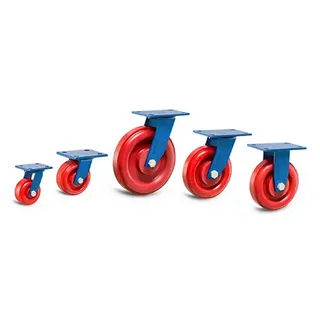Castor wheels have become an essential component in a wide range of applications today. From heavy industrial machinery to simple office chairs, their design and functionality have evolved significantly over the years. In this article, we explore The Evolution of Castor Wheels: From Industrial Origins to Everyday Use, highlighting their journey from specialized tools to ubiquitous household items.
Origins of Castor Wheels in Industry
The story of castor wheels begins in the industrial revolution, where factories needed reliable solutions to move heavy equipment and materials efficiently. Early castor wheels were made from solid iron or steel, designed to withstand extreme loads and rough surfaces. These wheels were mounted on swivel casters, allowing multi-directional movement essential for navigating cramped factory floors.
Initially, their primary use was in industrial settings—warehouses, factories, and workshops—where durability and strength were the most critical factors. Over time, engineers started to innovate with new materials and designs, leading to the next phase in the evolution of castor wheels.
Advances in Materials and Design
With advancements in materials science, castor wheels began to incorporate rubber, polyurethane, and plastic components. These new materials offered quieter operation, smoother rolling, and increased resistance to wear and tear. The transition from all-metal wheels to softer compounds also expanded their use beyond industrial environments.
The designs became more ergonomic and user-friendly. For instance, locking mechanisms were introduced to prevent unwanted movement, and precision bearings allowed for easier turning and reduced effort in pushing carts or chairs. This period marked a pivotal shift in the castor wheel’s identity, blending function with comfort.
Everyday Use and Modern Applications
Today, the evolution of castor wheels has brought them into nearly every aspect of daily life. From office chairs that allow employees to glide effortlessly across the workspace, to luggage wheels that make travel easier, castors have become indispensable.
Healthcare equipment, furniture, shopping carts, and even robotics now rely on sophisticated castor wheel designs tailored to specific needs. Modern castor wheels come in various sizes, materials, and load capacities, proving their adaptability to countless applications.
The widespread adoption of these wheels underscores the importance of understanding The Evolution of Castor Wheels: From Industrial Origins to Everyday Use—a testament to innovation meeting practical needs.
Conclusion
The journey of castor wheels from robust industrial machinery components to versatile tools in everyday life showcases remarkable innovation. Their development in materials, design, and functionality illustrates how a simple concept can transform industries and improve daily living.
Understanding The Evolution of Castor Wheel: From Industrial Origins to Everyday Use offers insight into how engineering and human ingenuity combine to create solutions that stand the test of time—and continue to roll forward into the future.

